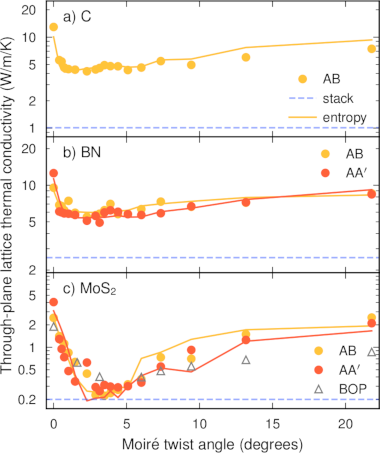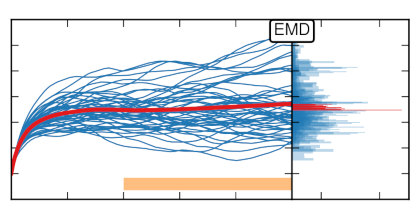Tuning the through-plane lattice thermal conductivity in van-der-Waals structures through rotational (dis)ordering
F. Eriksson,
E. Fransson,
C. Linderälv,
Z. Fan,
and
P. Erhart
ACS Nano 17, 25565
(2023)
arXiv:2304.06978
doi: 10.1021/acsnano.3c09717
zenodo: 7811021
(associated data)
Download PDF

It has recently been demonstrated that MoS2 with irregular interlayer rotations can achieve an extreme anisotropy in the lattice thermal conductivity (LTC), which is for example of interest for applications in waste heat management in integrated circuits. Here, we show by atomic scale simulations based on machine-learned potentials that this principle extends to other two-dimensional materials including C and BN. In all three materials introducing rotational disorder drives the through-plane LTC to the glass limit, while the in-plane LTC remains almost unchanged compared to the ideal bulk materials. We demonstrate that the ultralow through-plane LTC is connected to the collapse of their transverse acoustic modes in the through-plane direction. Furthermore, we find that the twist angle in periodic moiré structures representing rotational order provides an efficient means for tuning the through-plane LTC that operates for all chemistries considered here. The minimal through-plane LTC is obtained for angles between 1 and 4 degree depending on the material, with the biggest effect in MoS2. The angular dependence is correlated with the degree of stacking disorder in the materials, which in turn is connected to the slip surface. This provides a simple descriptor for predicting the optimal conditions at which the LTC is expected to become minimal.



